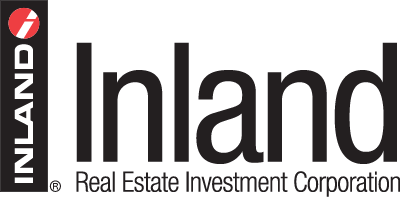What Are the Impacts on the Real Estate Industry?
In an effort to capture the changing dynamics of the real estate investment landscape, NCREIF (National Council of Real Estate Investment Fiduciaries) has expanded the NPI (National Property Index) to include categories for self-storage, senior housing, and “other” property types such as data centers, entertainment, and parking. Additionally, the apartment category is now classified as residential with subtypes to include apartments, senior housing, manufactured housing, and single-family homes. As these property types continue to see increasing capital flows, the flagship index will be able to reflect the sectors’ impact on total returns for commercial real estate.

Source: NCREIF. Announcing the Expanded NPI! Effective 1Q224.
We interpret this as strong confirmation that “ALTs” or alternative real estate sectors, are becoming increasingly prominent and significant within the institutional investment landscape. The strong performance of these sectors during the Global Financial Crisis, which continued during the subsequent recovery and expansion, have placed them firmly on the radar of commercial real estate investors. Shown below, ALTs continue to expand within the overall index, suggesting a trend for potential further growth.

Source: NCREIF
Strong performance throughout a range of economic backdrops will also be a factor in the continuing growth of the alternative asset classes. Below we observe three different economic regimes: recession, expansion, and pandemic. We note that these alternative asset classes have generally matched or outperformed their traditional counterparts during all three time periods.



Source: NCREIF Expanded NPI data retrieved from NCREIF database.
This consistent performance across multiple economic cycles has caught the eye of many institutional groups. With NCREIF’s incorporation of these property types into the NPI, we believe that these sectors will continue to gain recognition and move into the mainstream view of investors. As the industry gains access to and analyzes these asset classes, we believe that it will allow for thoughtful allocators to begin directing capital to ALTs and leverage its benefits of uncorrelated returns, along with non-economic demand drivers. We believe this approach provides an opportunity to create portfolios with increased diversification and potentially lower risk.
Going forward, the demographic factors that point to strong demand for many of these alternative asset classes include an aging population, domestic migration, and other major life events. With a continued increase in awareness of the ALTs and their solid historical performance, we anticipate ongoing capital flows into these sectors over time.
At Inland, we maintain our investment focus on alternative asset classes such as manufactured housing, senior housing, single-family BTR (Build-to-Rent), medical office, and self-storage as categories with promising fundamentals over the next decade and beyond.
Inland’s comprehensive product offerings simplify the process, enabling financial professionals to provide tailored solutions without the hassle of managing multiple providers. To learn more about how Inland can support your investment strategies, download our Product Overview Guide today and explore the range of options available to strengthen and diversify your clients’ portfolios.
*The hypothetical comparisons shown above are for illustrative purposes only and do not represent specific investments. An investment cannot be made directly in an index. Direct real estate is represented by the NCREIF Property Index (NPI). The NPI is a leading benchmark of institutionally owned, private real estate programs. The NPI is based on the unleveraged returns from a large pool of individual, investment grade commercial real estate properties across retail, office, industrial, and apartment sectors. The market values of the properties in the NPI are determined by appraisals rather than by market-based prices of the programs. While the NPI is not a measure of non-listed REIT performance, Inland management generally believes that the NPI is an appropriate and accepted index for the purpose of evaluating real estate returns and risks against other types of investments. The NPI is not a measure of non-listed REIT performance, since non-listed REITs use leverage; require the payment of up-front and other fees that typically exceed those of institutional programs; subject to expenses related to being a public company and fees and expenses associated with raising capital. These fees and expenses lower non-listed REIT returns. The NPI does not reflect management fees and other investment entity fees, costs and expenses that are typical of non-listed REITs. In addition, non-listed REITs are illiquid and their investment goals and objectives, as well as their strategies, may differ from the entities represented in the NPI. Non-listed REIT also differ from the NPI since a portion of the REIT’s holdings may consist of loans and other real estate-related investments, while the NPI is a measure of performance of equity investments in institutional properties that consist of office, industrial and retail. Asset allocation/diversification does not guarantee a profit or protect against a loss in a declining market. Past performance is no guarantee of future results. There can be no assurance that we will be able to identify or acquire investments in any particular asset classes or in any particular concentration or ratio or that we will meet our investment objectives.

